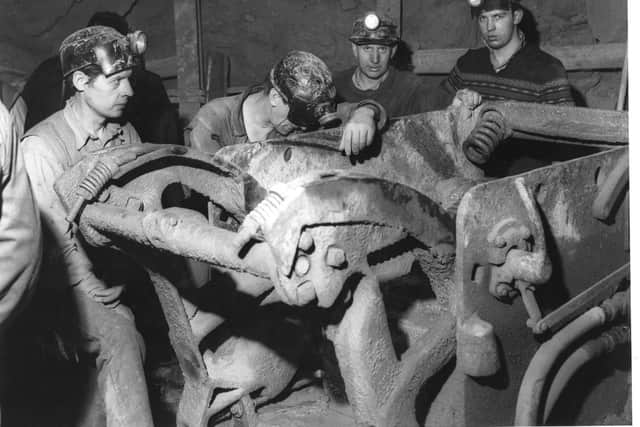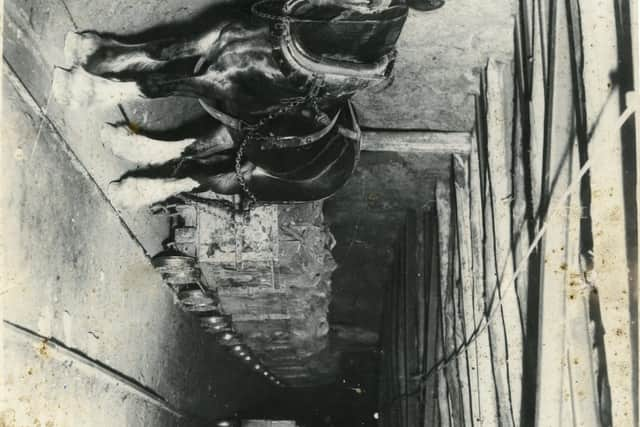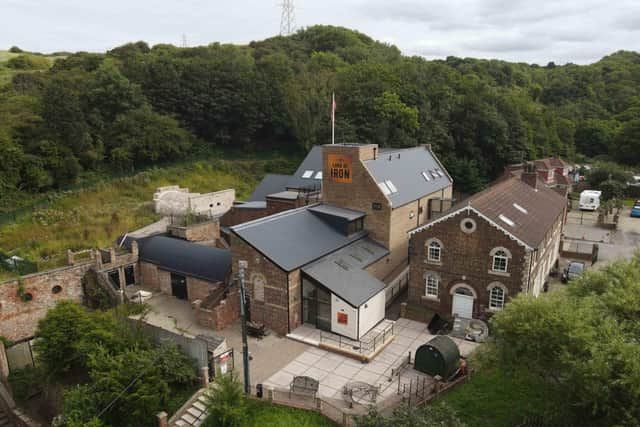Ironstone museum marks 60 years since closure of area's last mine
Although the story is romantic, Marley was in fact a mine engineer, and the true story is that he was asked by a local industrialist to survey the land and find a commercial seam close to places that had produced ironstone - rocks high enough in iron content to be smelted - on a small scale for centuries.
The seams ran from Eston, between Middlesbrough and Redcar, down to Staithes on the coast. The development of mining in East Cleveland drove the iron and steel industries in Teesside.
Advertisement
Hide AdAdvertisement
Hide AdFamously, it’s Middlesbrough steel spanning the iconic Sydney Harbour Bridge.


Workers flocked from all over the country to seek employment in Cleveland’s mines, including coal miners from Scotland and tin miners from Cornwall. East Cleveland became a crucial centre for the UK’s steel industry, producing roughly a third of the UK’s iron ore.
A little over a century after sparking the fire which launched Teesside’s growth, the final ironstone mine in Cleveland - North Skelton mine - closed for good on January 17 1964.
That mine is now home to Tees Components, a business which tools large-scale components for key industries, including defence, renewable power generation, new nuclear and decommissioning, and marine.
Advertisement
Hide AdAdvertisement
Hide AdMeanwhile, the site of the first commercial ironstone mine in Cleveland is now home to Land of Iron, a museum dedicated to preserving the industrial heritage of the area which re-opened in 2023 after a four year redevelopment programme in conjunction with North York Moors National Park.


Situated on the site of the former Loftus mine on the opposite side of a valley to what is now British Steel’s Skinningrove plant, Land of Iron’s drift mine is the only ironstone mine in the UK members of the public can enter.
Watching people gather nodules of ironstone on Saltburn beach in 1847, landowner Anthony Lax Maynard realised rocks on his property were of the same material. This became the Loftus mine, the first of 82 ironstone mines to be sunk in the area.
Land of Iron holds more than 7,500 objects in its collection, including the UK’s largest collection of mine abandonment maps - plans of tunnels and shafts made as a safety measure when mines are closed and capped off.
Advertisement
Hide AdAdvertisement
Hide AdThe museum’s collection was started by local journalist Tom Leonard when he decided to begin preserving tools and artefacts from the area’s mines which were closing at an increasing pace. The museum officially opened in 1983, and chief executive Marie Woods tells The Yorkshire Post about their mission.


“When people think about mining they automatically think about coal. We’re trying to show how important the iron industry was not just nationally, but internationally.
“We want people to come forward and share their stories, or their families’ stories about ironstone mining to show the resilience of these communities.”
Marketing Manager Nick Wesson continues: “It could be something passed down, something from their granddad. Anything people would like to tell us about life in those communities.”
Advertisement
Hide AdAdvertisement
Hide AdMany of the men who worked in the mines ended up moving to the steelworks in Teesside for work. “Those steelworks wouldn’t have been there without the iron,” says Nick.
One visitor from Barnsley recognised his grandfather in a photograph in one of the museum’s exhibits, sharing his family’s story about how he moved to find work down the pit in South Yorkshire after the end of ironstone mining in Cleveland.
“As every generation moves on, a link is lost,” adds Nick. “We want to keep the knowledge of that heritage alive.”
Marie is quick to explain their role as custodians on behalf of local people. “What we’re doing is safeguarding their history for them. I know it’s a terrible cliche, but it’s not our museum, it’s theirs. There are no barriers, and we want people from the area and further afield to be able to learn and share about this remarkable period of their history.”
Comment Guidelines
National World encourages reader discussion on our stories. User feedback, insights and back-and-forth exchanges add a rich layer of context to reporting. Please review our Community Guidelines before commenting.
